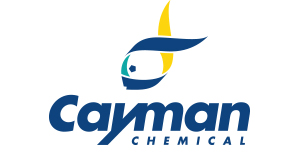MERS-CoV Spike Glycoprotein S1 Subunit (recombinant)
MERS-CoV Spike Glycoprotein S1 Subunit (recombinant)
SKU
CAY40877-100
Packaging Unit
100 µg
Manufacturer
Cayman Chemical
Availability:
loading...
Price is loading...
Formulation: Lyophilized from sterile PBS, pH 7.4
Purity: ≥95% estimated by SDS-PAGE
Formula Weight: 0
Shelf life (days): 365
Notes: Middle East respiratory syndrome coronavirus (MERS-CoV) is an enveloped positive-stranded RNA virus, a member of the Betacoronavirus genus, and the causative agent of MERS, an acute respiratory disease that often leads to pneumonia and renal failure.{62983,62985} The MERS-CoV spike glycoprotein mediates viral attachment to host cells and virus-cell-mediated membrane fusion during infection.{62983} It is composed of an S1 subunit, which contains the receptor-binding domain (RBD) that binds to host dipeptidyl peptidase-4 (DPP-4), and an S2 subunit containing heptad repeat regions 1 and 2, which are responsible for membrane fusion, as well as a transmembrane domain and a cytoplasmic tail. MERS-CoV is activated by cleavage of the spike glycoprotein into S1 and S2 subunits by various proteases, including TMPRSS2, cathepsin B, cathepsin L, and proprotein convertases, and blockage of this cleavage by protease inhibitors reduces MERS-CoV viral entry into target cells.{62983,62984} Vaccination with a recombinant MERS-CoV spike glycoprotein S1 subunit fused to a human IgG4 Fc fragment (LV-MS1-Fc) induces humoral immunity and the production of antigen-specific neutralizing antibodies in human DPP-4 transgenic mice.{68720} Cayman’s MERS-CoV Spike Glycoprotein S1 Subunit (recombinant) can be used for binding assays. This protein consists of 719 amino acids, has a calculated molecular weight of 79.9 kDa, and a predicted N-terminus of Tyr18 after signal peptide cleavage. By SDS-PAGE, under reducing conditions, the apparent molecular mass of the protein is 94 kDa due to glycosylation.
Purity: ≥95% estimated by SDS-PAGE
Formula Weight: 0
Shelf life (days): 365
Notes: Middle East respiratory syndrome coronavirus (MERS-CoV) is an enveloped positive-stranded RNA virus, a member of the Betacoronavirus genus, and the causative agent of MERS, an acute respiratory disease that often leads to pneumonia and renal failure.{62983,62985} The MERS-CoV spike glycoprotein mediates viral attachment to host cells and virus-cell-mediated membrane fusion during infection.{62983} It is composed of an S1 subunit, which contains the receptor-binding domain (RBD) that binds to host dipeptidyl peptidase-4 (DPP-4), and an S2 subunit containing heptad repeat regions 1 and 2, which are responsible for membrane fusion, as well as a transmembrane domain and a cytoplasmic tail. MERS-CoV is activated by cleavage of the spike glycoprotein into S1 and S2 subunits by various proteases, including TMPRSS2, cathepsin B, cathepsin L, and proprotein convertases, and blockage of this cleavage by protease inhibitors reduces MERS-CoV viral entry into target cells.{62983,62984} Vaccination with a recombinant MERS-CoV spike glycoprotein S1 subunit fused to a human IgG4 Fc fragment (LV-MS1-Fc) induces humoral immunity and the production of antigen-specific neutralizing antibodies in human DPP-4 transgenic mice.{68720} Cayman’s MERS-CoV Spike Glycoprotein S1 Subunit (recombinant) can be used for binding assays. This protein consists of 719 amino acids, has a calculated molecular weight of 79.9 kDa, and a predicted N-terminus of Tyr18 after signal peptide cleavage. By SDS-PAGE, under reducing conditions, the apparent molecular mass of the protein is 94 kDa due to glycosylation.
| SKU | CAY40877-100 |
|---|---|
| Manufacturer | Cayman Chemical |
| Manufacturer SKU | 40877-100 |
| Package Unit | 100 µg |
| Quantity Unit | STK |
| Product information (PDF) | Download |
| MSDS (PDF) |
|

 Deutsch
Deutsch










